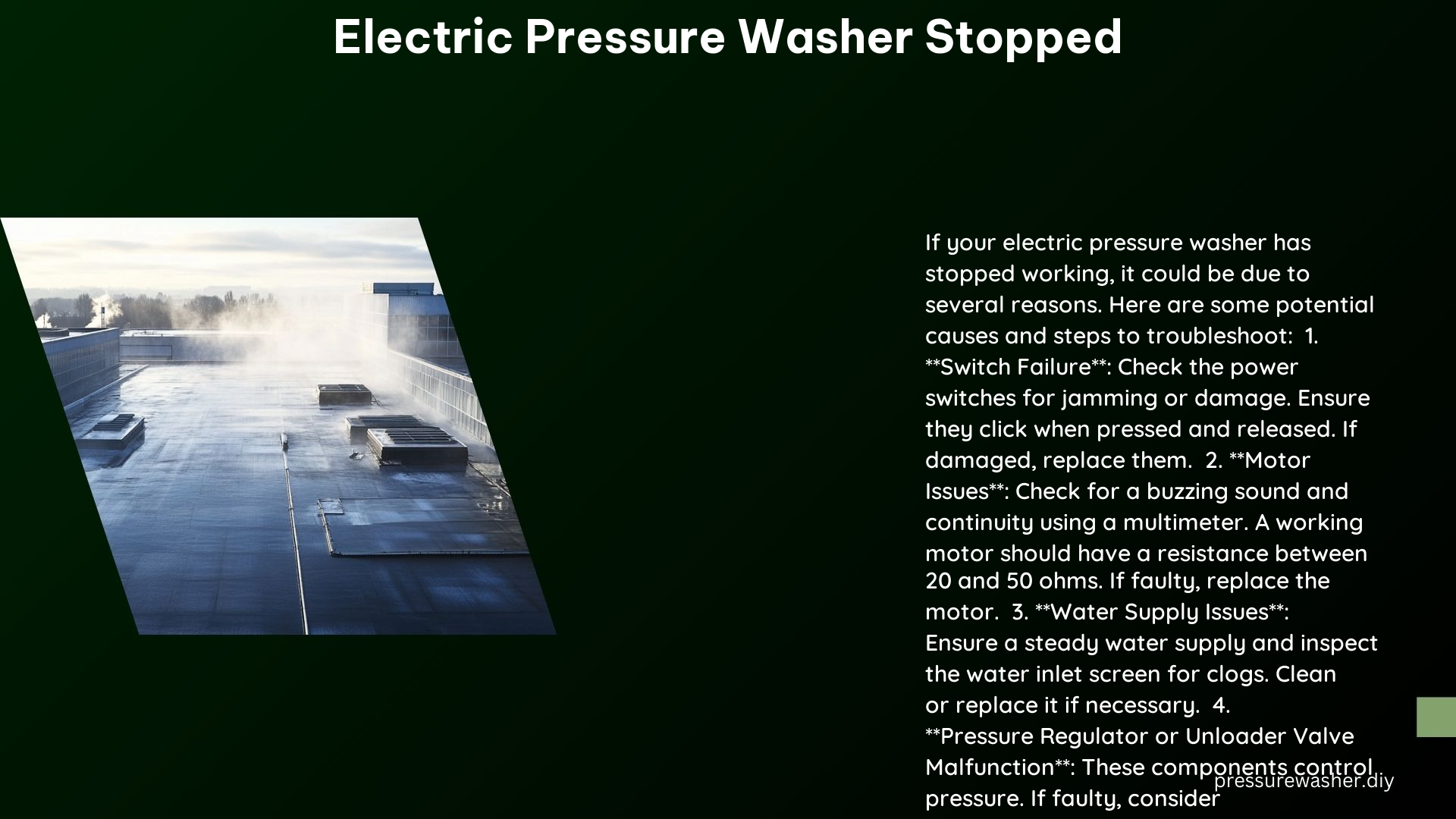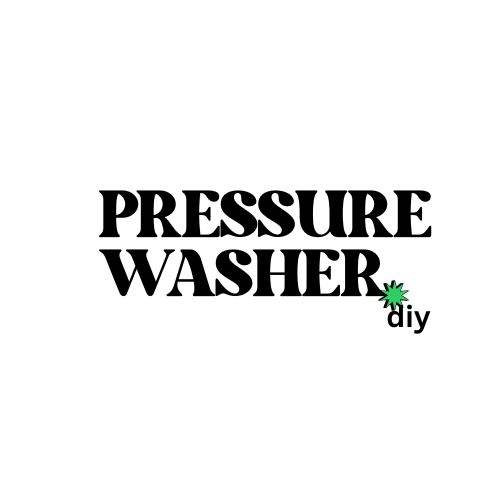If your electric pressure washer has stopped working, there could be several potential reasons behind it. As an expert on the topic, I’ve compiled a comprehensive troubleshooting guide to help you identify and resolve the issue. This guide covers the most common causes of an electric pressure washer malfunction and provides step-by-step instructions to get your machine back up and running.
Common Reasons Why Your Electric Pressure Washer Won’t Start
1. No Water Flow
One of the most common reasons for an electric pressure washer to stop working is a lack of water flow. This can be caused by a blockage in the lance, hose, or water inlet screen. To troubleshoot this issue:
- Ensure the water supply is turned on and there is adequate water pressure.
- Check the lance, hose, and water inlet screen for any debris or blockages. Clean or replace these components as needed.
- Inspect the water inlet filter for any clogs and clean it thoroughly.
- Verify that the water inlet hose is not kinked or damaged, as this can restrict water flow.
2. Electrical Issues
Electrical problems can also cause an electric pressure washer to stop working. Here’s what you should check:
- Inspect the power cord and plug for any signs of damage or wear. Replace the cord if necessary.
- Ensure the GFCI (Ground Fault Circuit Interrupter) is reset and functioning correctly. Test the GFCI by pressing the “test” button and then the “reset” button.
- Examine the switch assembly for any signs of burning or melting. If the switches appear damaged, replace them with new ones.
- Check the wiring connections within the pressure washer for any loose or damaged wires. Tighten or replace the wiring as needed.
3. Motor Failure
If the motor in your electric pressure washer is faulty, it may need to be repaired or replaced. To diagnose a motor issue:
- Listen for a buzzing sound from the motor, which could indicate a problem.
- Use a multimeter to test the motor’s continuity. A working motor typically has a resistance of 20-50 ohms.
- If the motor is not functioning correctly, consult a professional technician or the manufacturer for further assistance.
4. Pressure Regulator or Unloader Valve Malfunction
The pressure regulator and unloader valve are critical components that control the pressure in the system. If these components fail, it can cause issues like the motor not turning on or a loss of pressure. Consider having a professional inspect and replace these components if needed.
Troubleshooting Steps

1. Check Water Flow
- Remove the lance and squeeze the trigger to see if water is flowing. If water is flowing, the issue may be with the lance.
- Inspect the lance for any blockages or debris and clean it thoroughly.
- Check the water inlet hose for kinks or damage that could be restricting water flow.
2. Inspect Electrical Components
- Examine the power cord and plug for any signs of damage or wear. Replace the cord if necessary.
- Ensure the GFCI is reset and functioning correctly.
- Inspect the switch assembly for any signs of burning or melting. Replace the switches if they appear damaged.
- Check the wiring connections within the pressure washer for any loose or damaged wires.
3. Test the Motor
- Listen for a buzzing sound from the motor, which could indicate a problem.
- Use a multimeter to test the motor’s continuity. Compare the resistance reading to the expected range for your model.
- If the motor is not functioning correctly, consult a professional technician or the manufacturer for further assistance.
4. Consult Professional Help
If you’ve tried the above troubleshooting steps and the issue persists, it’s best to consult a professional technician or the manufacturer’s support team for further assistance. They can provide more in-depth diagnosis and repair services to get your electric pressure washer back in working order.
Technical Specifications
Power Cord and Plug
- Ensure the power cord is undamaged and the plug is securely connected to both the pressure washer and the power outlet.
- Check for any signs of wear, such as fraying, cracks, or loose connections.
- Replace the power cord if it shows any signs of damage.
GFCI (Ground Fault Circuit Interrupter)
- Verify that the GFCI is reset and functioning properly to prevent electrical shock.
- Test the GFCI by pressing the “test” button and then the “reset” button.
- Replace the GFCI if it is not resetting or functioning correctly.
Micro Switches
- Inspect the switch assembly for any signs of burning or melting.
- Check the switches for proper contact and clean any dirt or debris around them.
- Replace the switches if they appear damaged or are not functioning correctly.
Motor
- Listen for a buzzing sound from the motor, which could indicate a problem.
- Use a multimeter to test the motor’s continuity. A working motor typically has a resistance of 20-50 ohms.
- If the motor is not functioning correctly, consult a professional technician or the manufacturer for further assistance.
Reference Links
- https://www.justanswer.com/small-engine/kiyxx-electric-pressure-washer-runs-few-minutes-stops.html
- https://www.youtube.com/watch?v=K2fqRFZuWT8
- http://stanleypressurewashers.com/support/my-pressure-washer-does-not-turn-on/
- https://www.reddit.com/r/pressurewashing/comments/14p1lxa/craftsman_electric_pressure_washer_stopped/
- https://www.espares.co.uk/advice/symptom/pressure-washer-not-working
